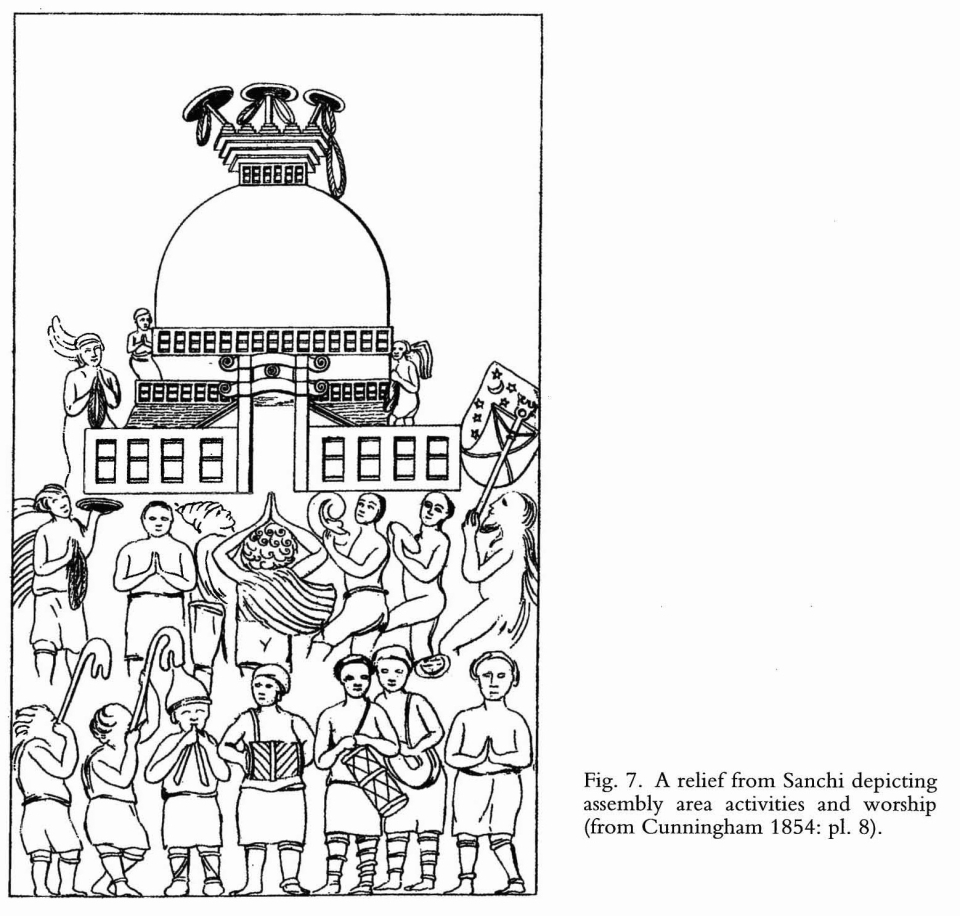The physical organization and layout of Buddhist reliquary mounds, stupas, provides a window into the forms of ritual practiced by Buddhists in the first few centuries B.C. through the end of the second century A.D. Specifically, the manner in which stupas were architecturally presented informs upon the differences in ritual presentation by the clergy and the laity. Attempts by the Buddhist clergy to direct worship and establish a privileged position in regard to the Buddha were resisted by the laity; in contrast, the laity attempted to preserve the egalitarian aspects of Buddhism. Traces of the laity's resistance can be identified in the architectural layouts of ritual spaces of the early Buddhists. The organization of ritual within stupa complexes also illustrates the methods used by early Buddhists to foster group cohesion within a highly individualistic religious tradition.
